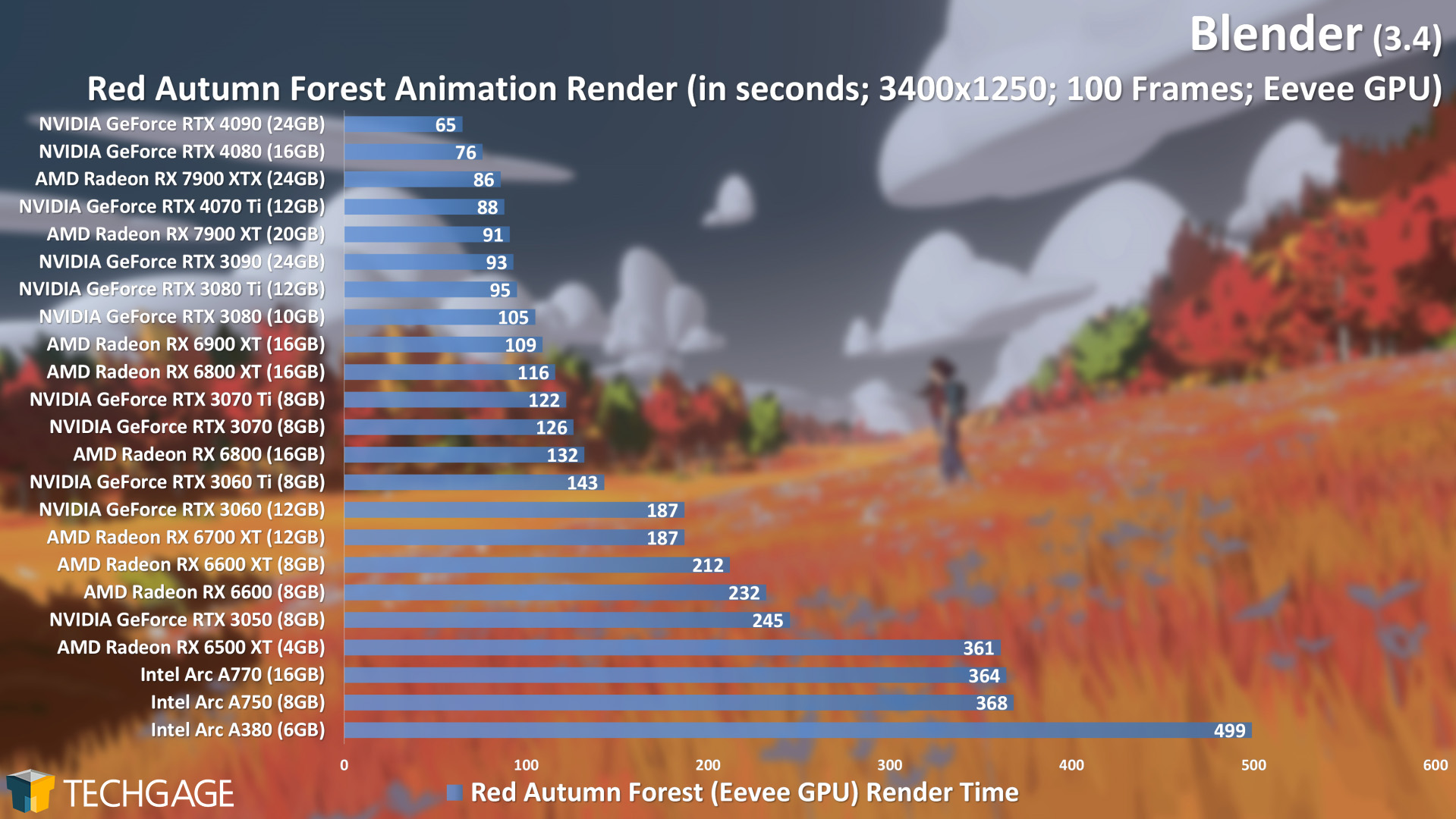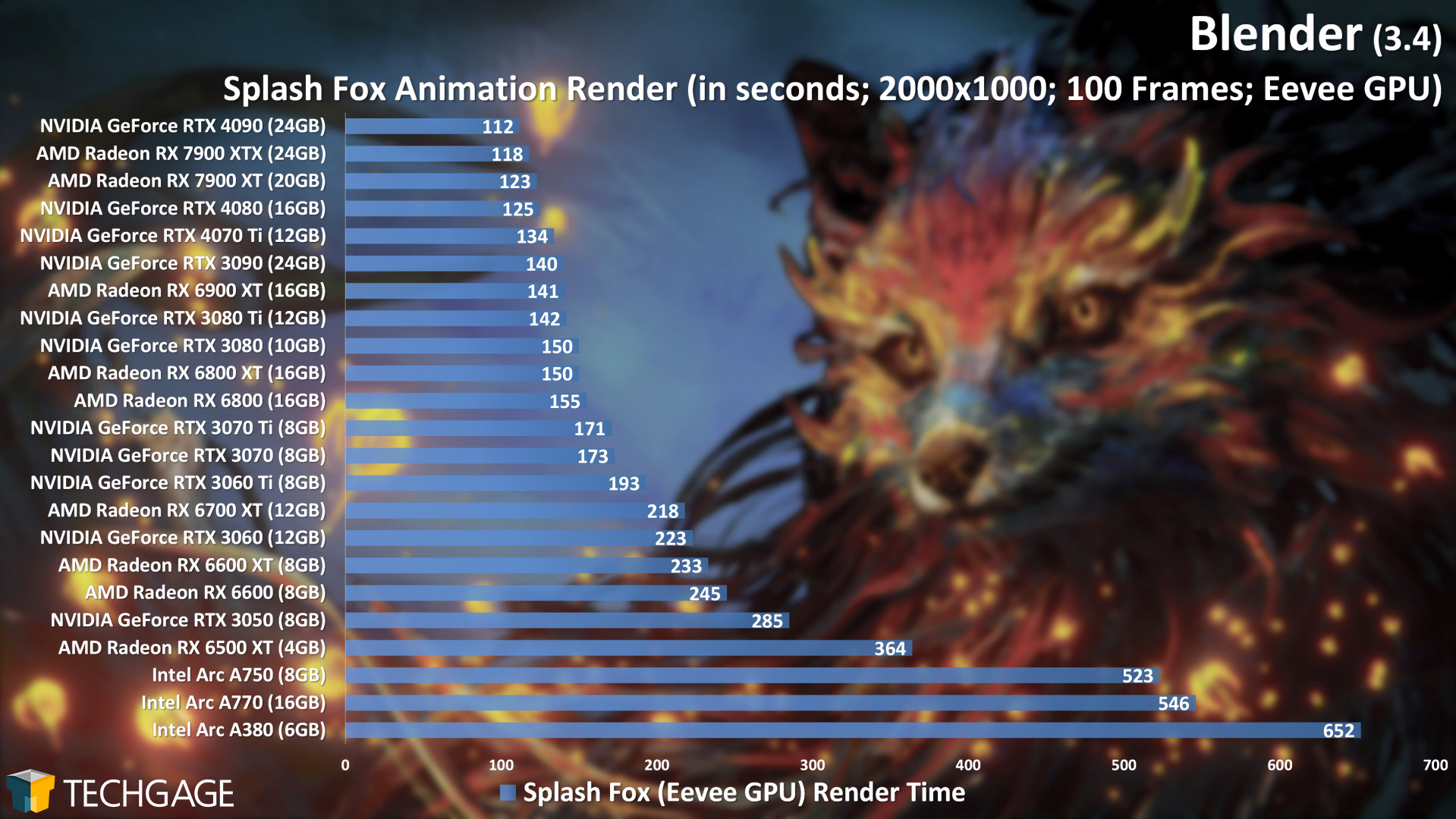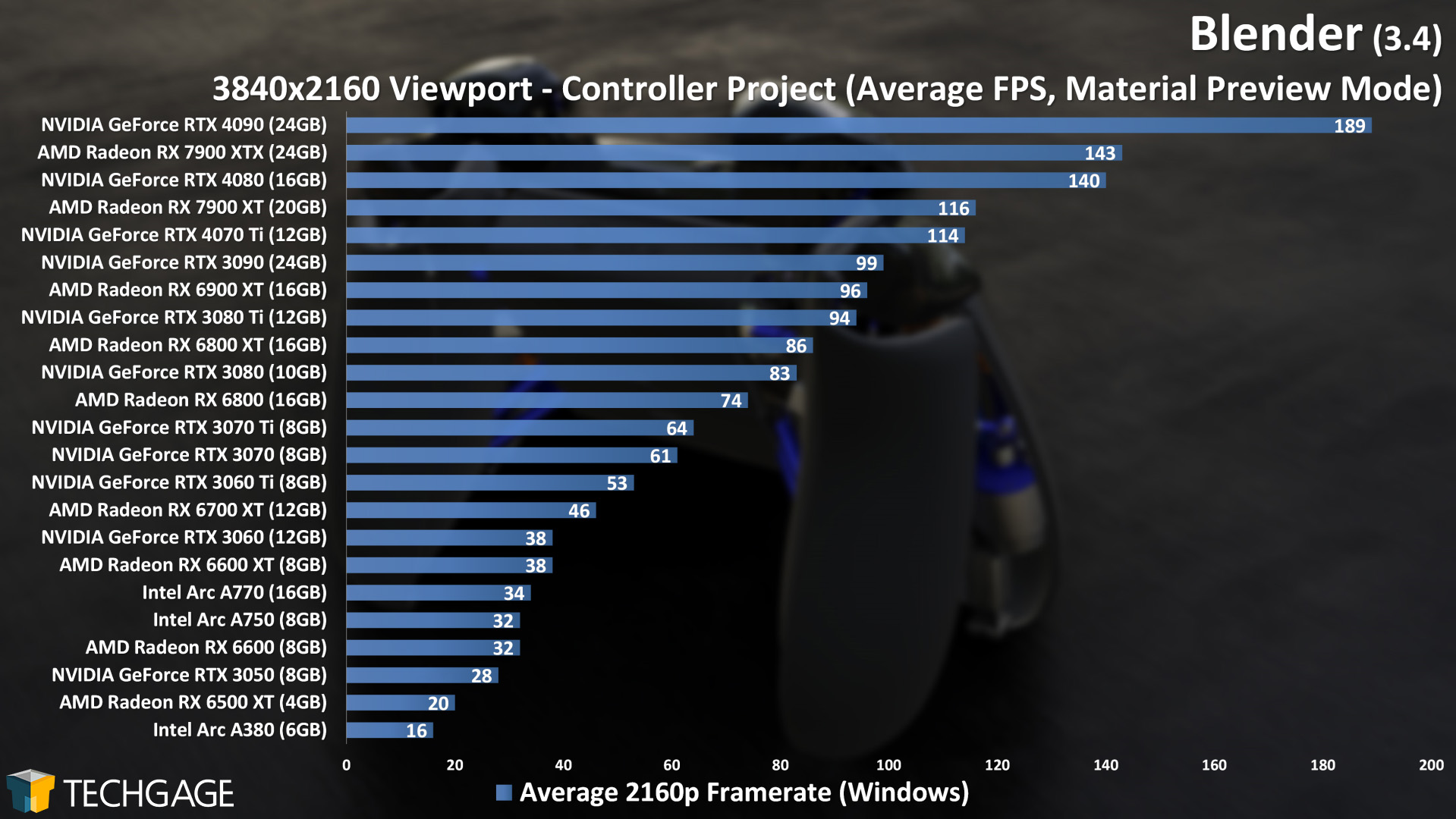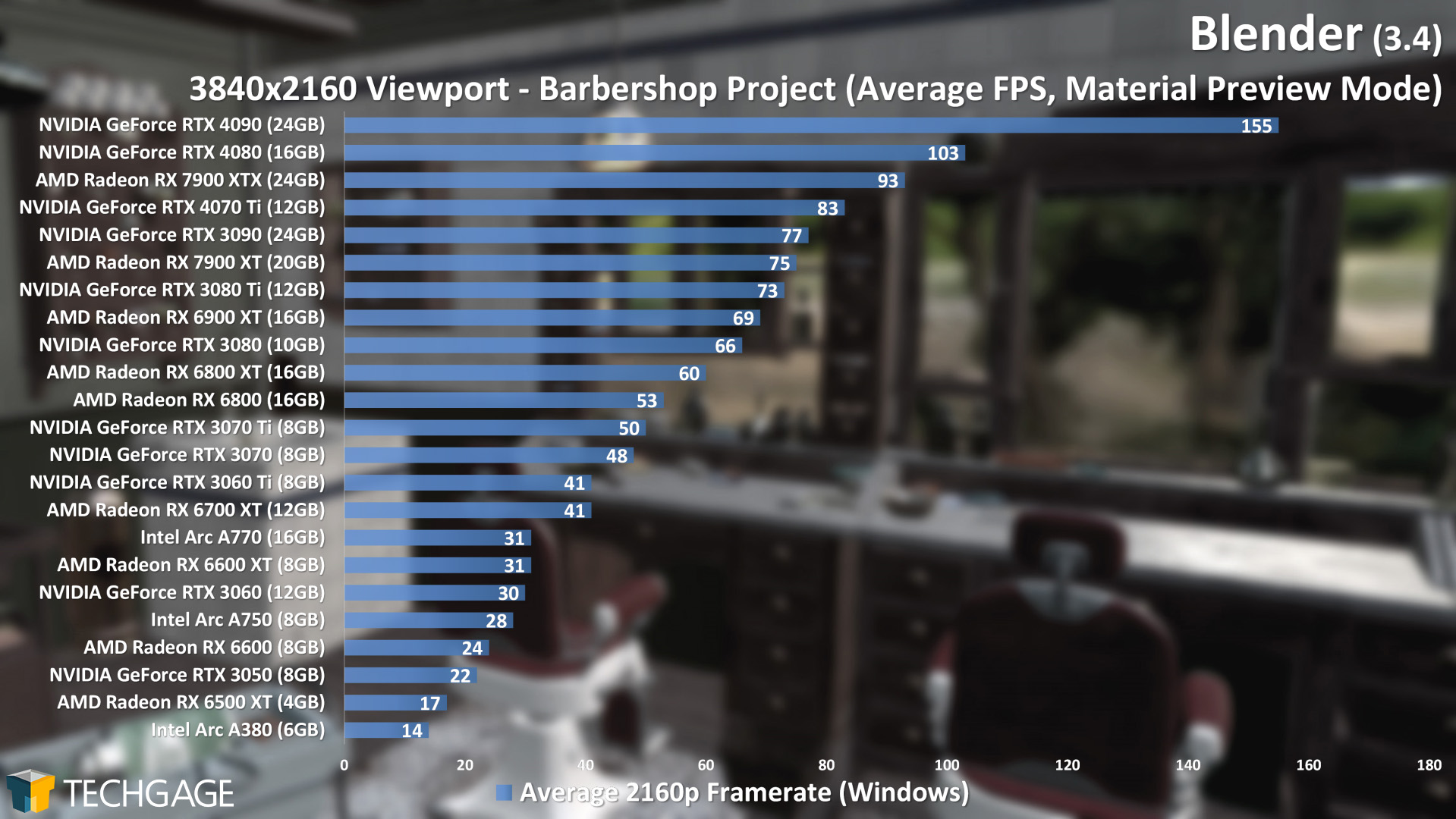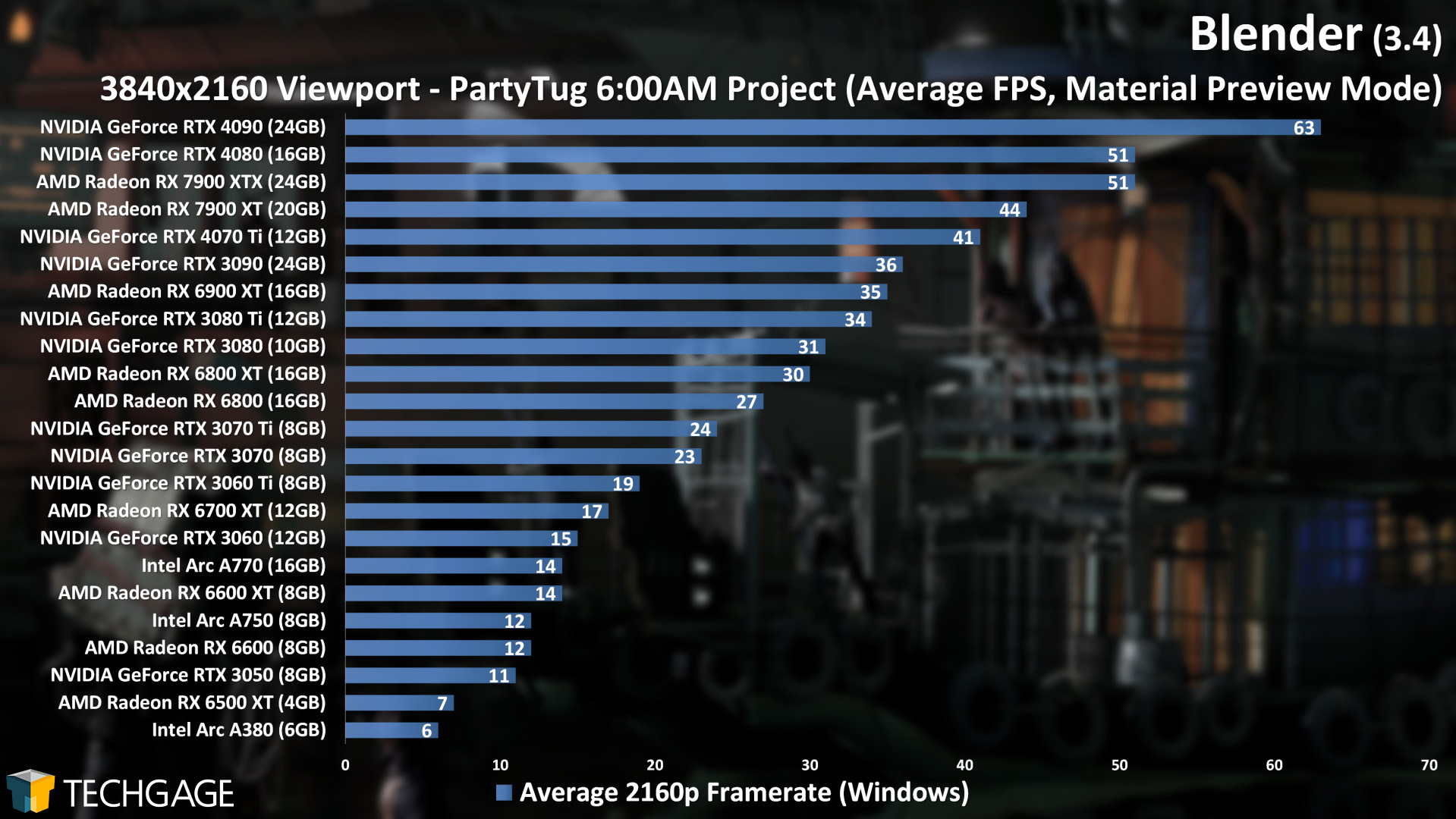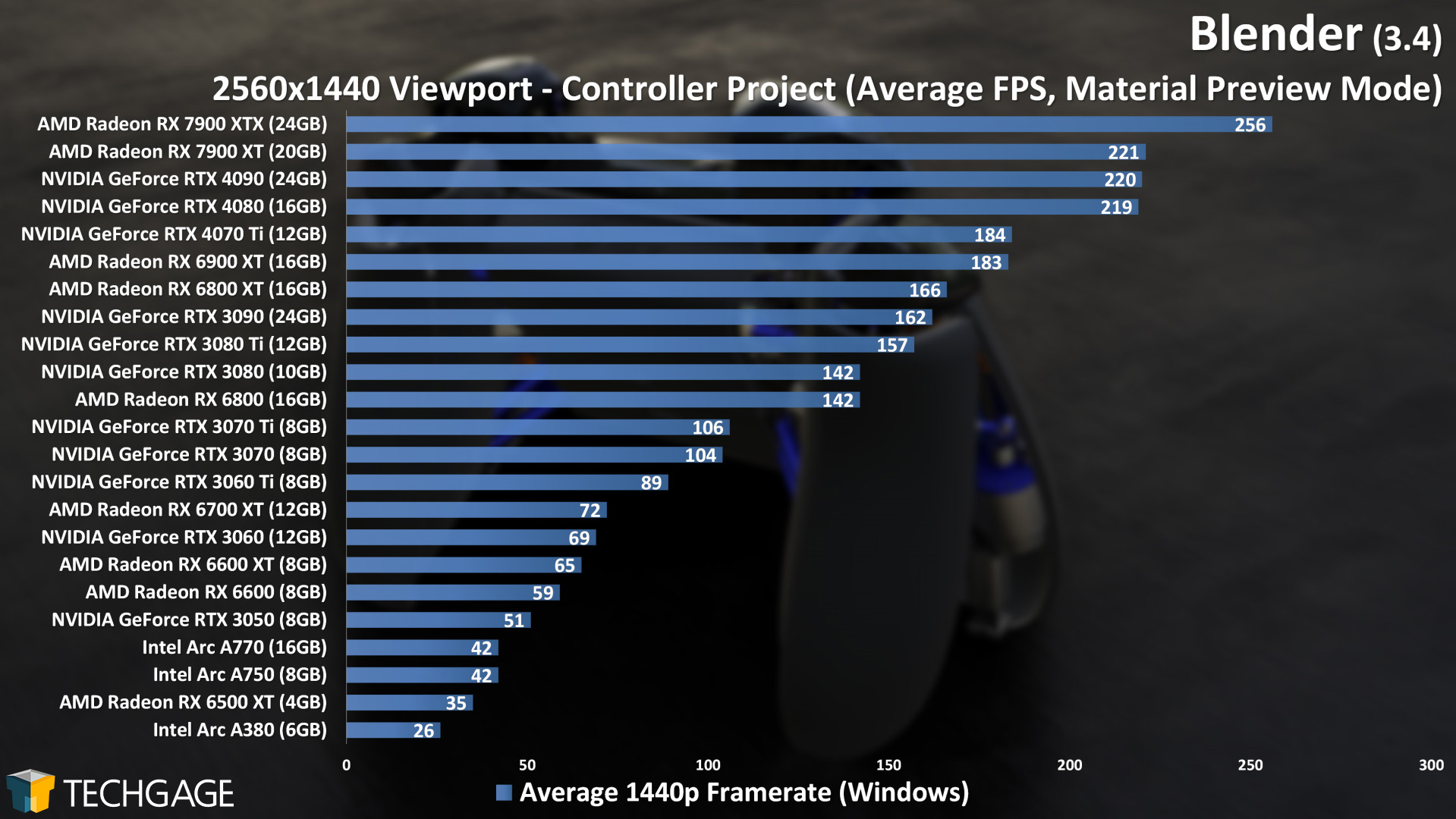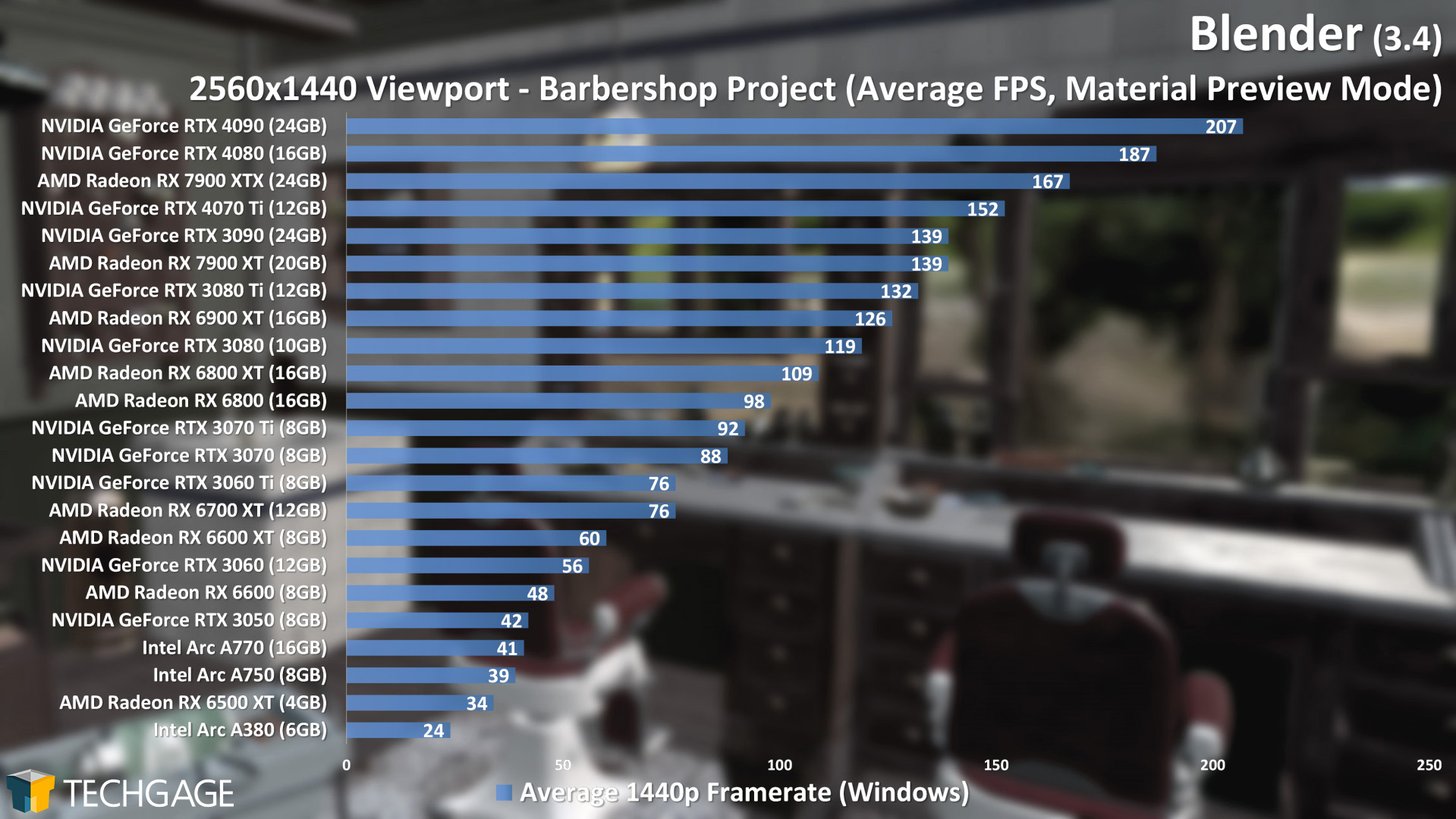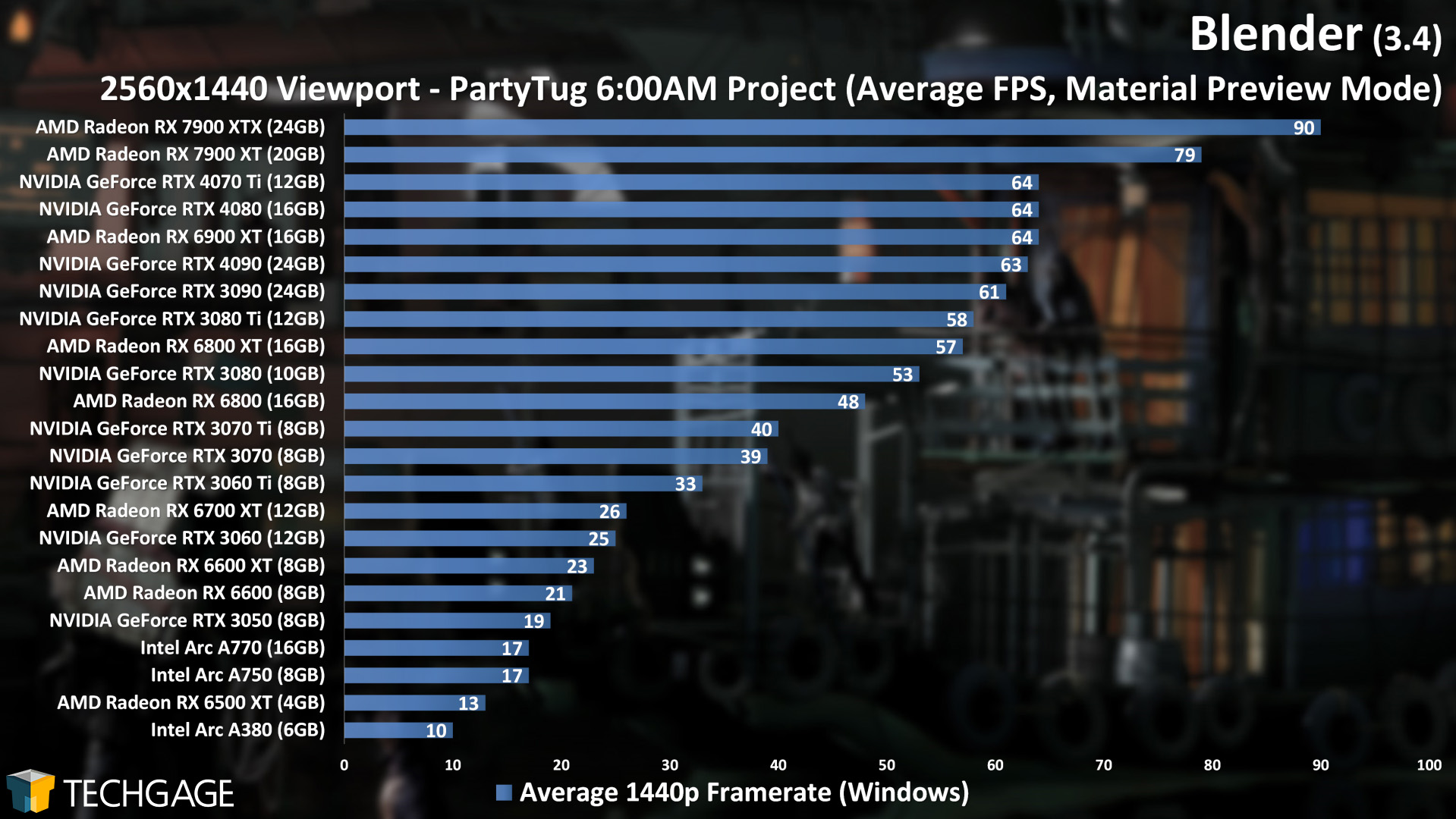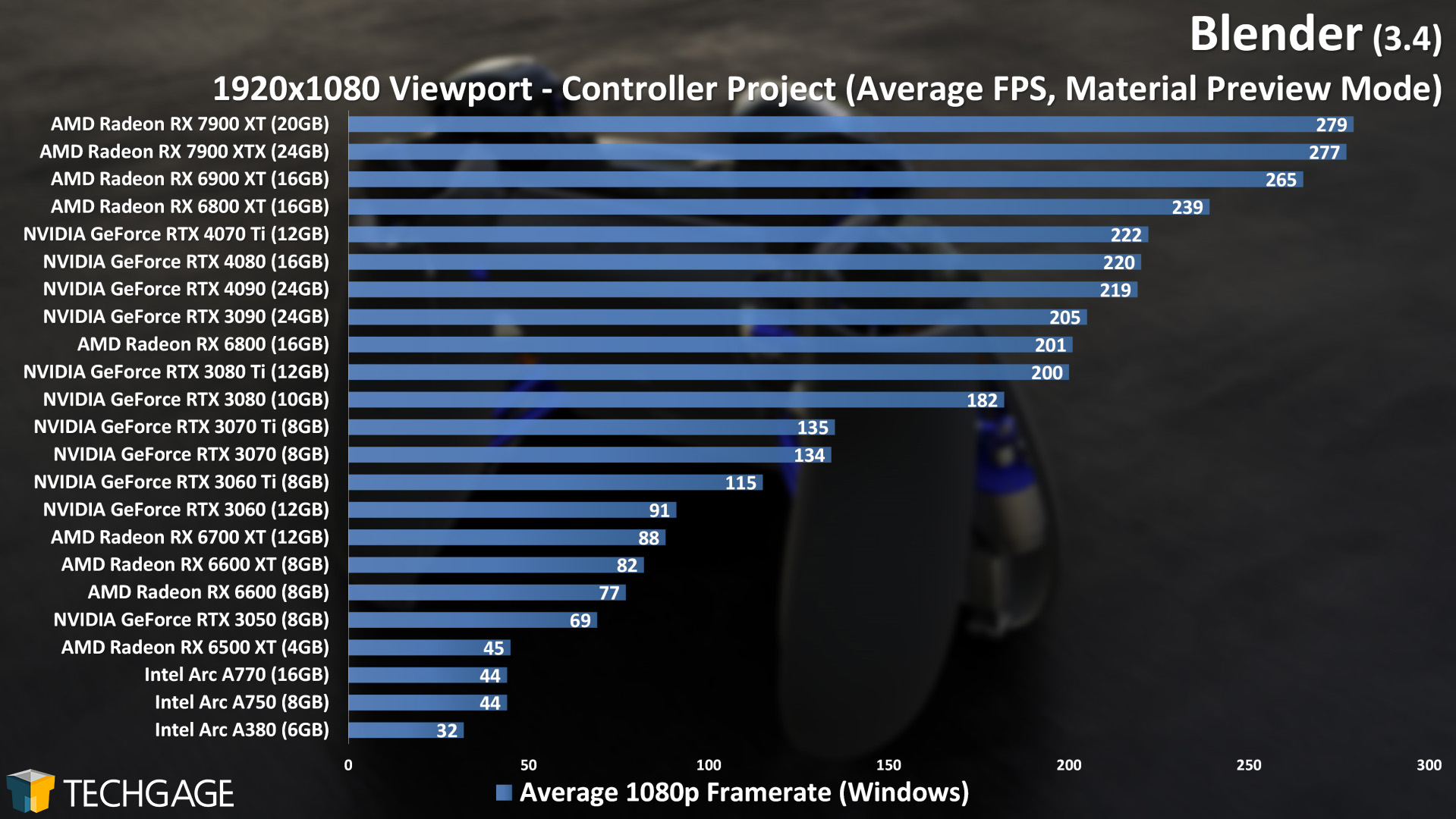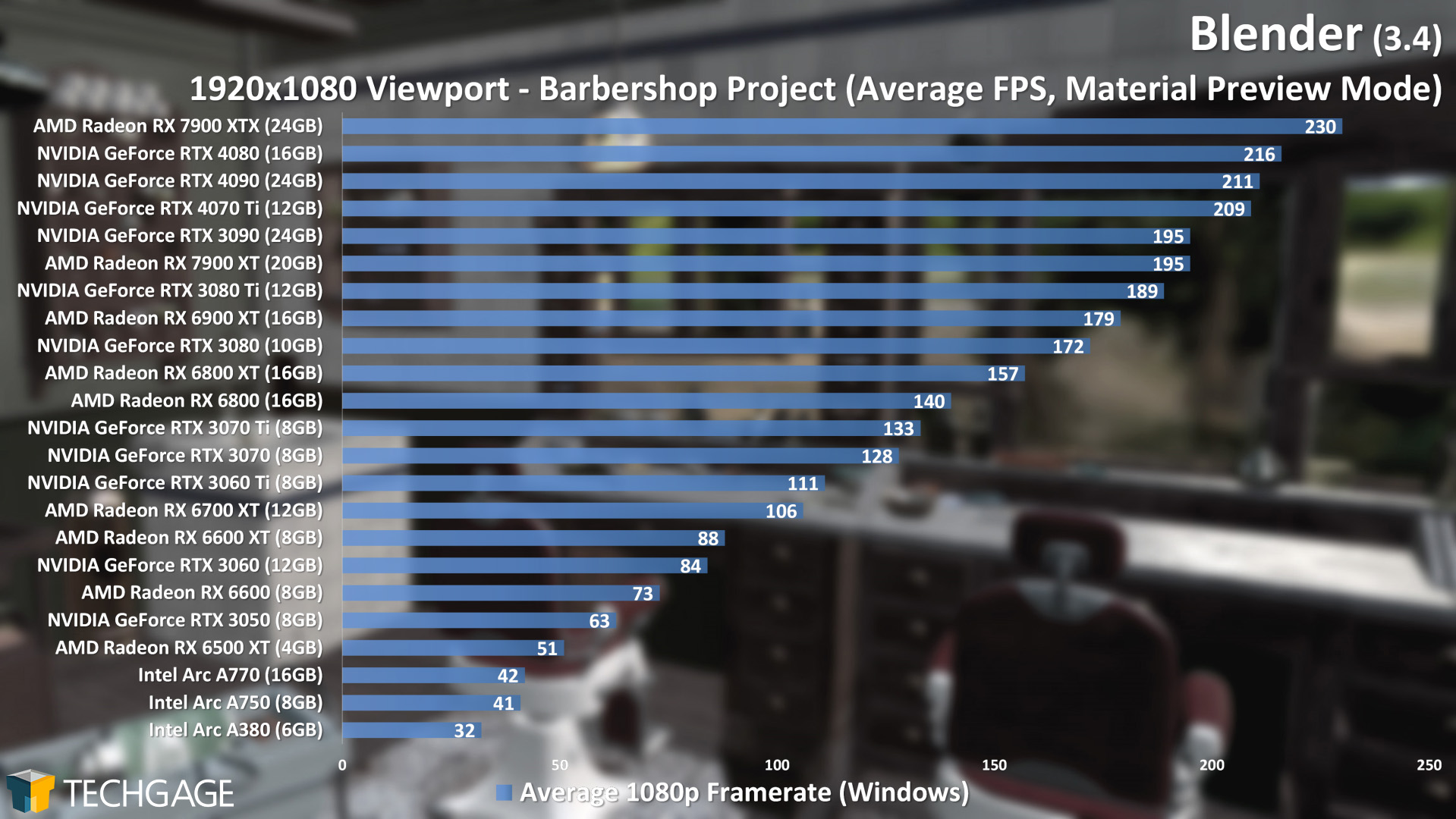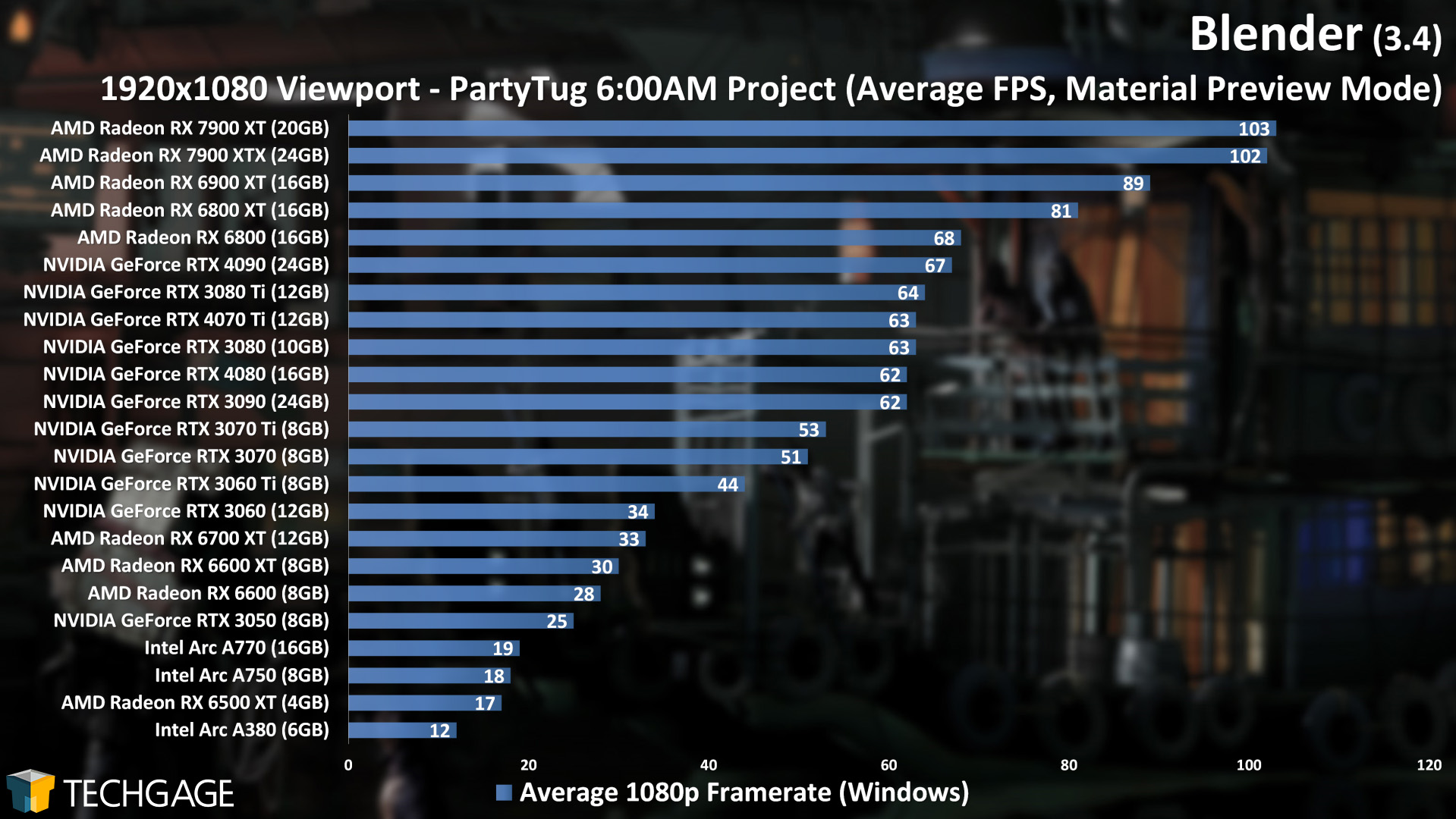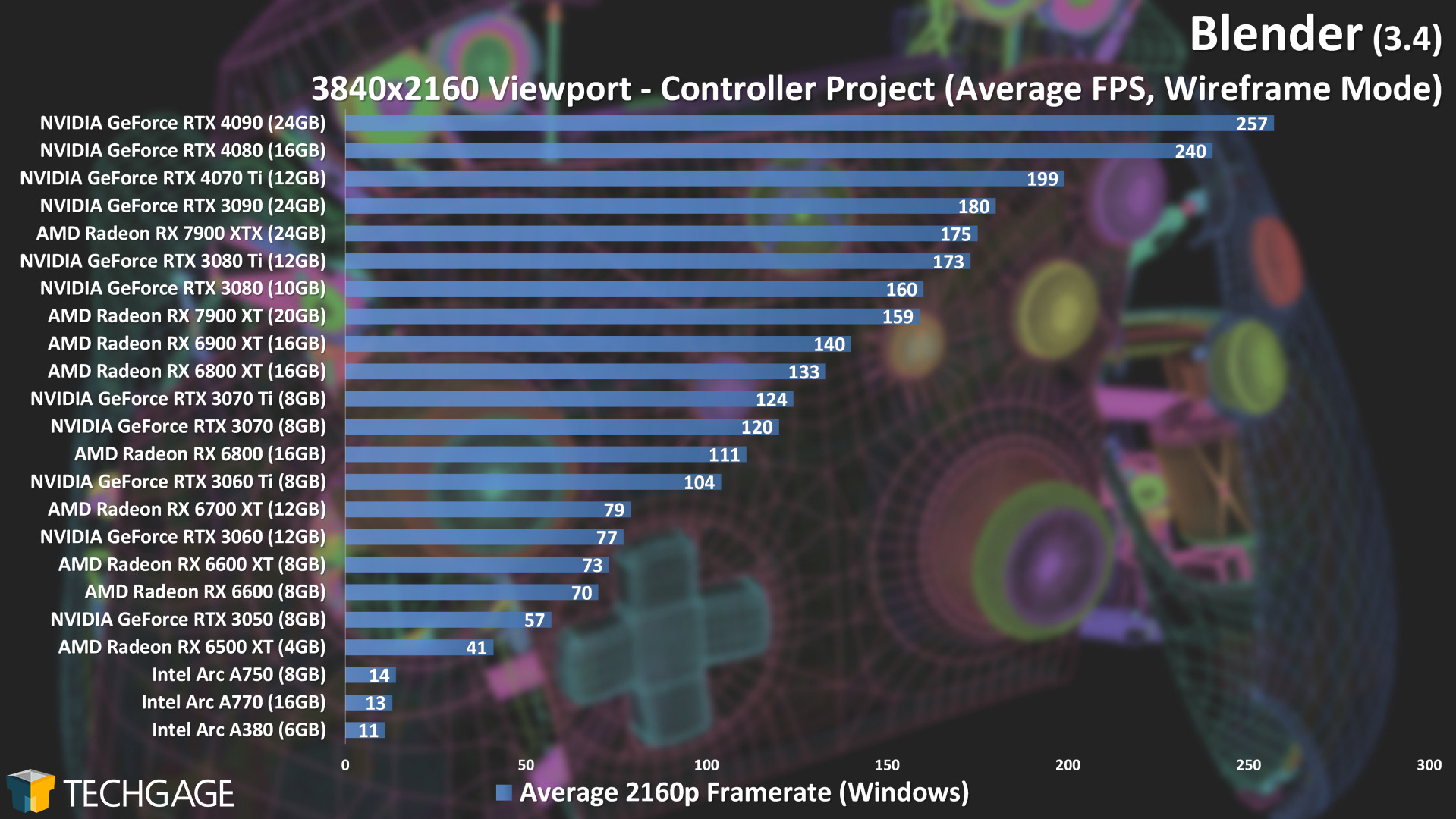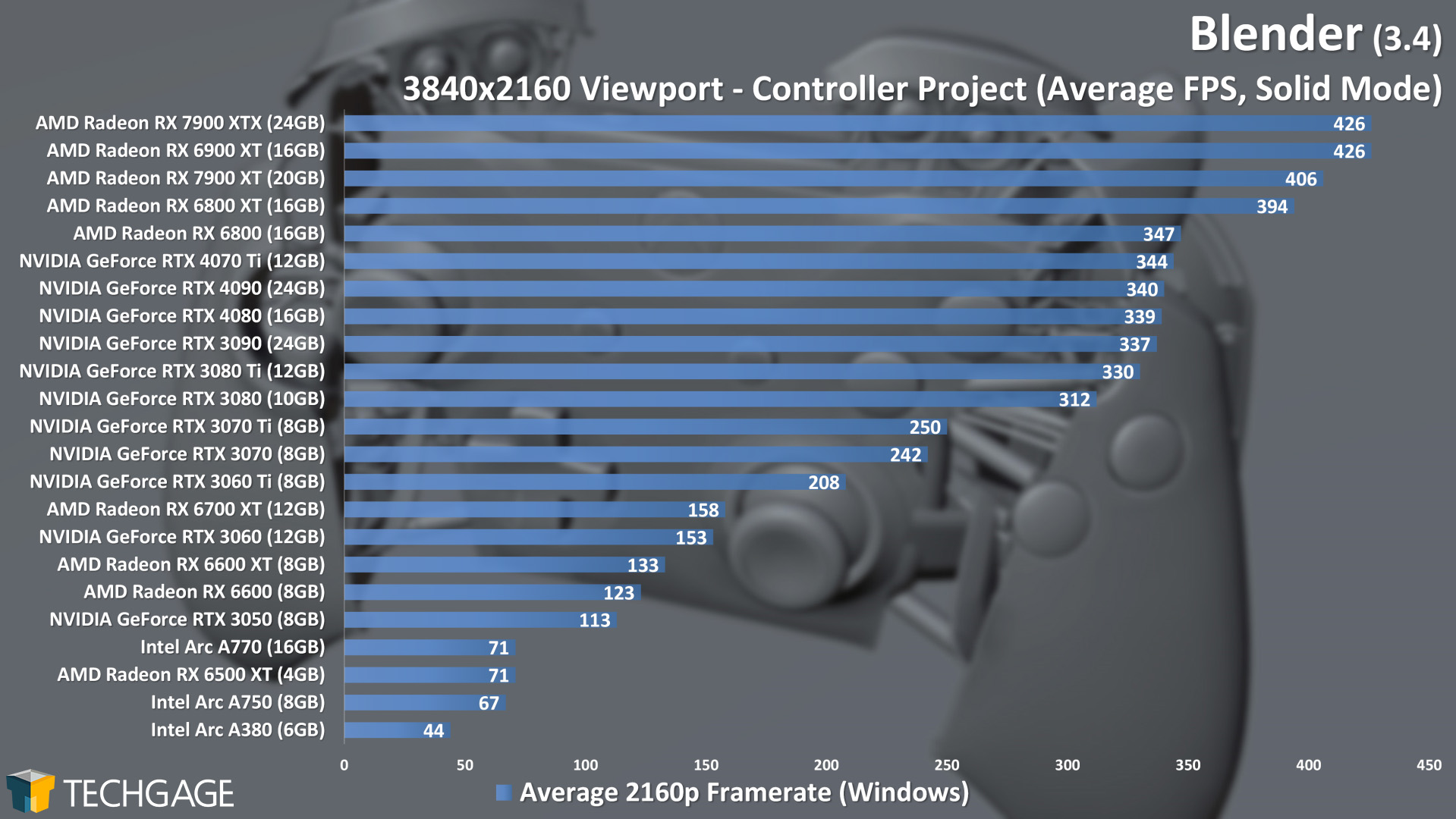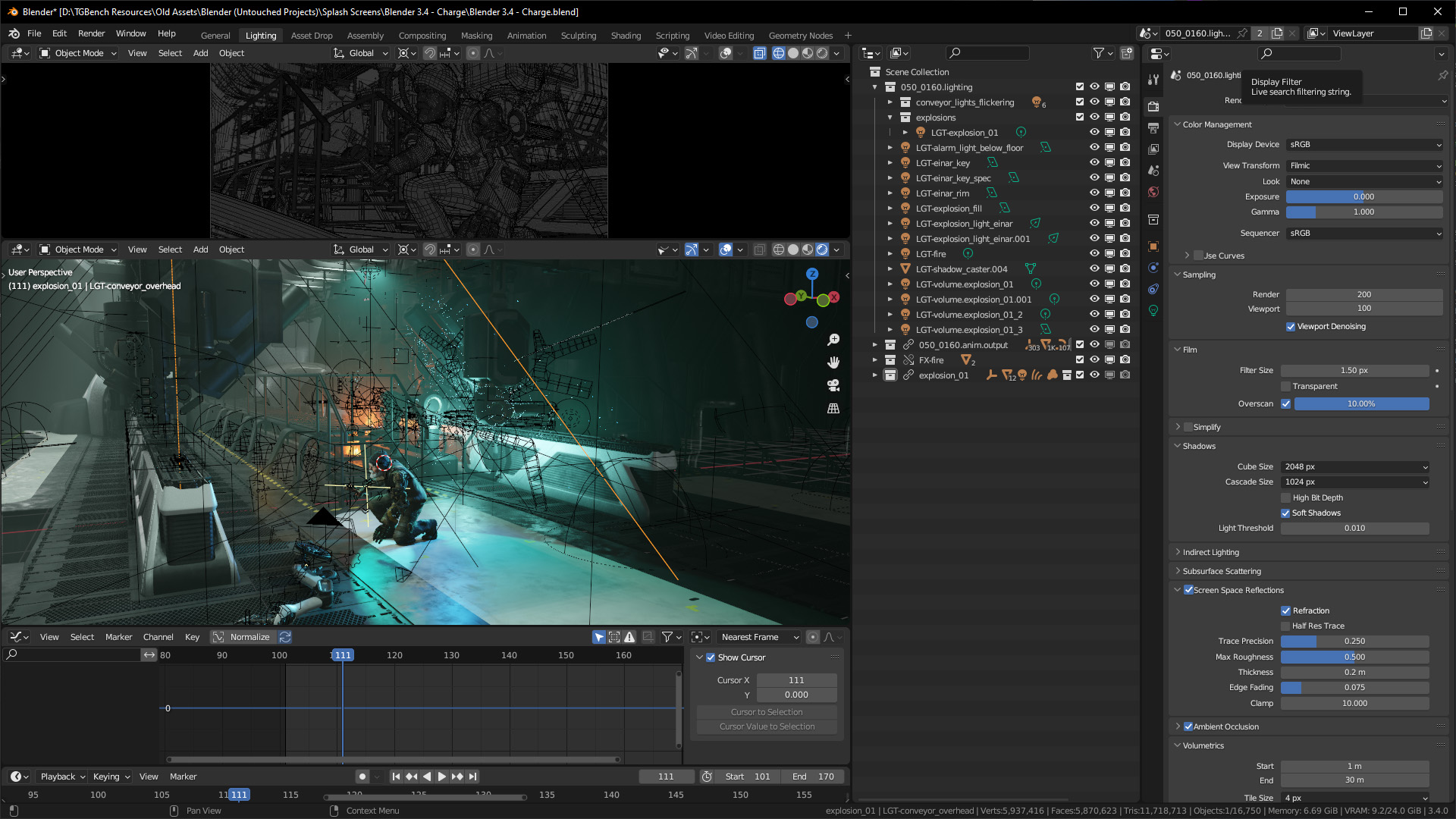- Qualcomm Launches Snapdragon 4 Gen 2 Mobile Platform
- AMD Launches Ryzen PRO 7000 Series Mobile & Desktop Platform
- Intel Launches Sleek Single-Slot Arc Pro A60 Workstation Graphics Card
- NVIDIA Announces Latest Ada Lovelace Additions: GeForce RTX 4060 Ti & RTX 4060
- Maxon Redshift With AMD Radeon GPU Rendering Support Now Available
Blender 3.4 Performance Deep-dive: Cycles, Eevee & Viewport

Blender 3.4 released just a few weeks ago, and as usual, we couldn’t wait long before jumping in and exploring its performance with current GPUs from AMD, Intel, and NVIDIA. With 22 graphics cards and six Cycles and Eevee projects in-hand for rendering and viewport testing, let’s find out which GPUs rise above the rest.
Page 2 – Blender 3.4: Eevee & Viewport Performance; Final Thoughts
Eevee GPU: AMD, Intel & NVIDIA
With Cycles, it’s clear that NVIDIA’s OptiX API helps it retain a demanding lead over the competition (at least for now), but Eevee is much more neutral. It’s unable to take advantage of RT acceleration like Cycles can, so it gives every GPU vendor a new chance to impress.
Perhaps the most stand-out set of results in these graphs are those for Intel. All three Arc cards keep pinned to the bottom of each one, so we hope to see that improve with future driver releases.
It’s also worth pointing out that Radeon performs pretty well here, with AMD’s newest top-end options competing nicely with NVIDIA’s Ada Lovelace offerings.
Viewport: Material Preview, Solid & Wireframe
As the three graphs above highlight well, the makeup of a project can dramatically change how well a GPU can manage to deliver strong frame rate performance inside of a viewport. The Controller project is the simplest of the bunch in design, which is why we see the best overall performance there. While Barbershop has quintuple the triangles of the other projects, it’s the Eevee-bound PartyTug project that proves most grueling, as Material Preview with Eevee is effectively the same as Rendered.
With any viewport mode, you don’t need sky-high frame rates to have a good experience working inside of it, but with Material Preview mode, we always suggest trying to aim for at least 30 FPS, and with a project like Barbershop, that’s thankfully easily accomplished even on lower-end GPUs.
Naturally, as the overall resolution decreases, performance will increase:
Material Preview is technically the most demanding of the three viewport modes (ignoring the actual render option), but some vendors can handle the Solid and Wireframe modes better than the others:
The first results to grab us here come from Intel’s Arc, and not for a great reason. Somehow, Arc cards sit at the bottom of the charts, far from their relevant competition. What’s more interesting is if you look again at the 1080p and 1440p Material Preview results above, Arc still hovers around the bottom. Yet, at 4K, they scale more in line with what we’d expect.
An oddity we discovered with our Blender 3.3 testing has carried over here, where in AMD’s Radeon lineup, the RX 6800 and above can deliver more than 2x the performance of the models below it (eg: RX 6700 XT). It’s not just with Material Preview mode where we can see that, but also Solid. There, we see the RX 6700 XT hit 158 FPS, while the RX 6800 hits 347 FPS. Here’s a graph from our previous Blender 3.3 testing which highlights this performance leap in an easier-to-grasp way.
Wrapping Up
Overall, there wasn’t too much new performance information in this particular deep-dive vs. the last one, even despite the fact that AMD’s newest top-end GPUs have made an entrance. For Cycles use, NVIDIA continues to deliver market-leading performance, while both AMD and NVIDIA deliver strong performance for Eevee animations. Thankfully, AMD’s viewport performance has improved over the past six months, which helps Radeons slot into the performance charts closer to where we’d expect them.
We’re hopeful that the upcoming Blender 3.5 deep-dive will shake things up a bit, and give us some new performance findings to talk about. With Intel’s performance where it is, we’re also hopeful that the company keeps Blender on its radar, and improves performance before long – especially with regards to Eevee and the viewport. In Cycles, Intel actually delivers great performance at its respective price-point.
When not too much changes between one Blender version and another, we always try to spice up the most recent deep-dive with something a bit different. For this article, that involved taking a look at apples-to-apples API comparisons, which meant foregoing OptiX on NVIDIA for CUDA. While NVIDIA still managed to keep dominant in Cycles when using CUDA, it does give us hope that AMD and Intel’s RT acceleration implementations in future Blender builds will help level the playing field a bit more.
For the next deep-dive, there’s a chance that either AMD or Intel will get their respective RT acceleration baked in, but if not, we’ll find other ways to spice up our look – including a possible look at Linux vs. Windows, since it’s been about a year-and-a-half since we checked that out. In any event, if you are left with any lingering questions about which GPU you should go after, please leave a comment!
Support our efforts! With ad revenue at an all-time low for written websites, we're relying more than ever on reader support to help us continue putting so much effort into this type of content. You can support us by becoming a Patron, or by using our Amazon shopping affiliate links listed through our articles. Thanks for your support!




